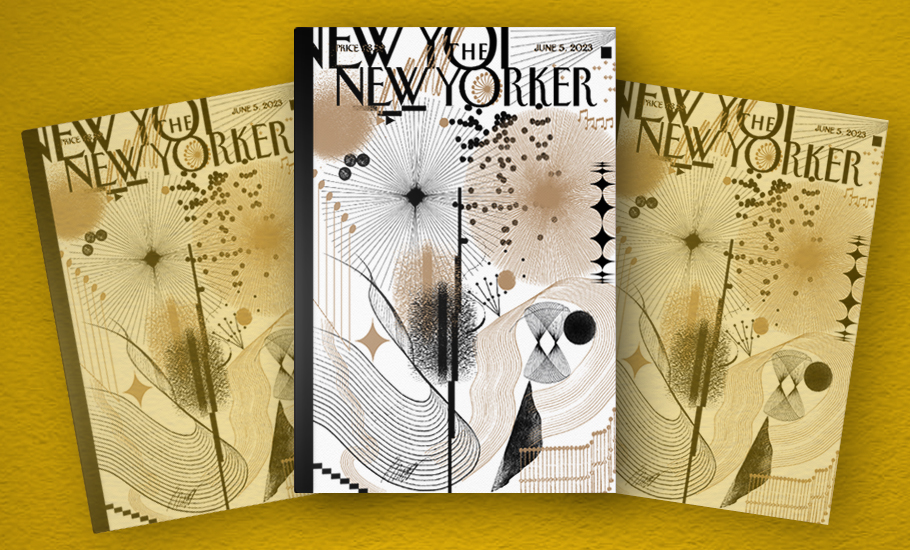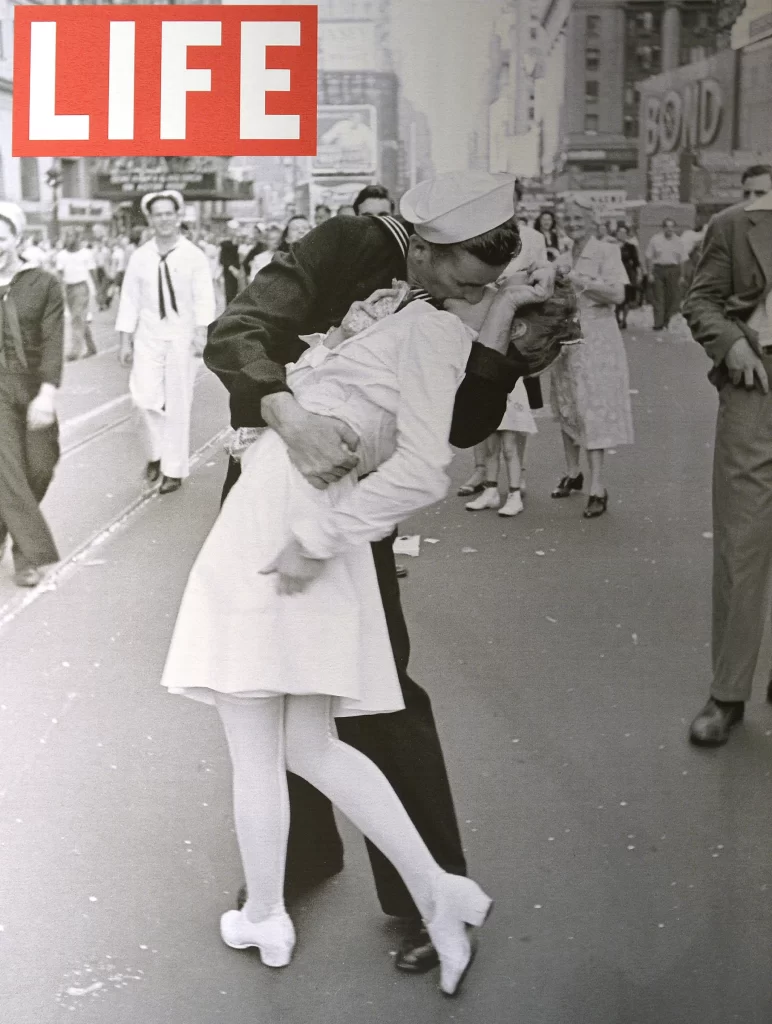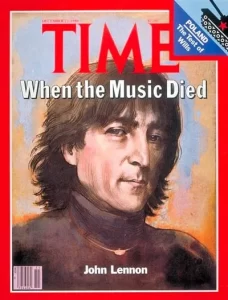
An elegy for magazine covers as ‘The New Yorker’ steps into a synesthetic future

The latest issue of The New Yorker has a musical digital cover. Click on any design and a brief musical interlude will serenade you. Beyond a mere gimmick, it beckons us toward a future that once seemed unimaginable: an era where a magazine cover transcends visual boundaries. A magazine cover has always been music to our eyes. Now it is music to our ears as well, offering a delightful feast for our senses.
Magazine covers have evolved significantly over the years, adapting to technological advancements and artistic trends. Traditionally, they belonged to the realm of photographers and art directors, but a new era is dawning where they belong to the philharmonic.
A soundtrack for the newsstands
For us magazine aficionados, who bemoan a bygone age of sophistication and artistry, this strikes a disheartening chord within us. Though it resonates as yet another drumbeat to our ears. Magazine covers have meant so much throughout the decades, ever since Time and Life magazines showed us how a cover could unravel personalities, create larger-than-life figures, bring down governments, freeze history, and fast forward lives.
Dictators, war mongers, peaceniks, and executioners alike have graced the covers with the poise and charisma of individuals etching their place onto history’s wailing wall. Remarkably, they accomplished this without the accompaniment of music. The drumbeats reverberated solely within our minds.
Also read: White House Plumbers review: A goofy, sharply satirical ride through Watergate scandal
For those of us who have worked in magazines for many years, it is difficult to think of an elegy for the photo-imagined magazine cover. The cover possessed an unwavering permanence; it was unchanging. While magazines themselves emerged, thrived, and eventually perished, the cover endured, steadfastly refusing to fade away. It continued to evoke powerful memories, even long after the cover’s subject had ceased to exist. It was the image itself, a silent yet resonant force, not an orchestra.
Henry R. Luce, who popularised the notion of the magazine, had this vision of the image and the cover in his concept note for Life magazine: “The magazine would take for its field all the world which may be known by seeing — and its promises to reveal every week, aspects of life and world which have never before been seen by the camera’s miraculous second sight. By giving to pictures their own magazine, (Life) intends that the camera shall at last take its place as the most convincing reporter of contemporary life.”

Oh, how well the image on the cover played its role over the last century. Why do we remember Alfred Eisenstaedt’s V-J-day kiss picture? (V-J Day in Times Square, a photograph by Eisenstaedt, was published in Life in 1945 with the caption, ‘In New York’s Times Square a white-clad girl clutches her purse and skirt as an uninhibited sailor plants his lips squarely on hers’). The magazine cover had this arrangement with posterity: to remember each other. Though Life was inspired by other European magazines like Berliner Illustrirte Zeitung, etc, the weekly photo magazine and news magazines gave to the cover an immediacy and stunning effect that was to be reproduced many times over in many magazines.
A culmination of a lifetime of hard work, a confirmation of arrival
To be featured on a magazine cover was the ultimate culmination of a lifetime of hard work. Occasionally, a brief flash of genius was enough. The glory, fame and, for many, financial rewards which came after the cover, made life undeniably worthwhile. For a sportsman, for instance, to go without having been on the cover of Sports Illustrated was like being confined to the dug-out of history for ever. Similarly, for a model not to have been on the Vogue cover was confirmation of a career that failed. All those countless hours gone without a Cover to tell posterity that such a lady was a glamour star or such a man played for his country.
Also read: India at Cannes 2023: From Aishwarya Rai’s silver hood to Anurag Kashyap’s Kennedy
A magazine cover also served as a definitive affirmation of success, a marker of one’s arrival. There was no ambiguity to it. It was the fact, and the future, for the magazine had proclaimed it to be so. When it came to signalling the end of an era or the emergence of something extraordinary or peculiar, there was nothing like the magazine cover.
When John Lennon was shot dead in 1980, Time magazine declared on its cover: “When the Music Died.” All news magazines had a great sense of timing. If the world underwent a change in a given week, or if Queen performed ‘Radio Ga Ga’ live at Wembley, the magazine cover presented it to us, eliciting awe and wonder. On September 13, 1968, Life magazine featured The Beatles with the headline: “The Days in the Life of The Beatles: They Call it Their Authentic Biography,” accompanied by a photograph taken by Ronald Fitzgibbon. The fame resulting from such a cover extended to the photographer as well, many of whom made a career out of just one magazine cover.

Pictures as covers
The magazine cover also had the power to evoke national outrage once. When the defunct news magazine Sunday first carried the picture of a man blinded in Bhagalpur, when pictures of violence were splashed across the cover of Sunday, India Today, Outlook, etc., we as a nation learnt to look at ourselves in dismay and wondered where we were headed.
Photographers roamed the world to get a picture that would grace the cover of Life or Time and, in India, of India Today or Outlook. Wars, conflicts, bomb blasts were all par for the course. Once while India Today photographer Pramod Pushkarna was in Jalandhar, a bomb went off just a few feet away from him, leaving a frightening debris behind. Pushkarna shot one of the most devastating pictures of the terror phase in Punjab, with little fires burning all over and bodies lying everywhere.

Henri Cartier-Bresson, that incredible capturer of stunning moments, was a traveller in search of history. Destiny favoured him. He was in Delhi when Mahatma Gandhi was shot dead and he got the most remarkable picture of Jawaharlal Nehru announcing the death of Gandhi in 1948.
Also read: Asur Season 2 review: Mythology meets technology in a thrilling, but unfulfilling fare
In the same year, Cartier-Bresson was in Shanghai when he saw queues of people waiting to change the currency in what was known as The Gold Rush. He was in Trivandrum when he captured the memorably cute picture of a rocket nose being ferried on a bicycle at the Rocket launching station. It was the nose of India’s first rocket. Freezing the moment was everything. These pictures were covers.
But it appears the music is better for the magazine cover. Like some old X-mas-day greeting cards which, when squeezed, emit a squeaky rendition of Jingle Bells. You can hear similar squeaky version in magazine covers now. First, it starts as a playful gimmick. Then it becomes a regular amusing feature.
The essence of “photographic testimony,” which was what cover pictures were all about, is no longer eagerly anticipated. Other forms of testimony have emerged. The Time magazine cover declaring ‘When the Music Died’ now appears ironic in retrospect. The cover itself has been taken over. It may be a good thing. For it will be music to our ears.


